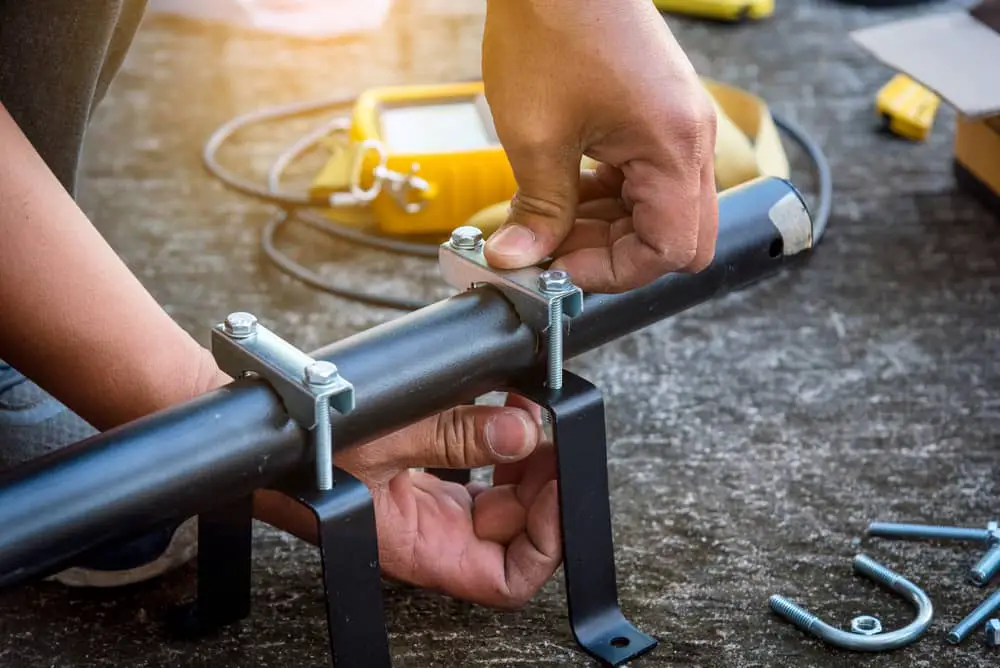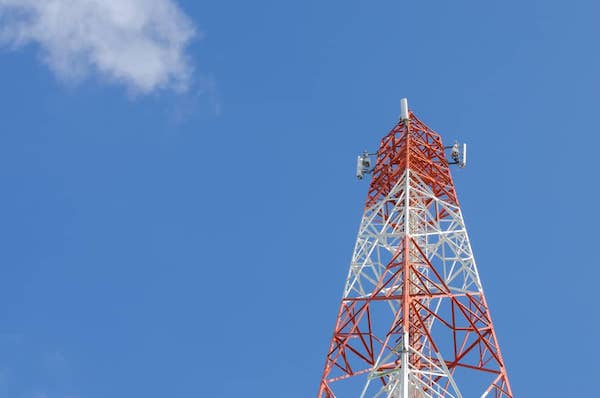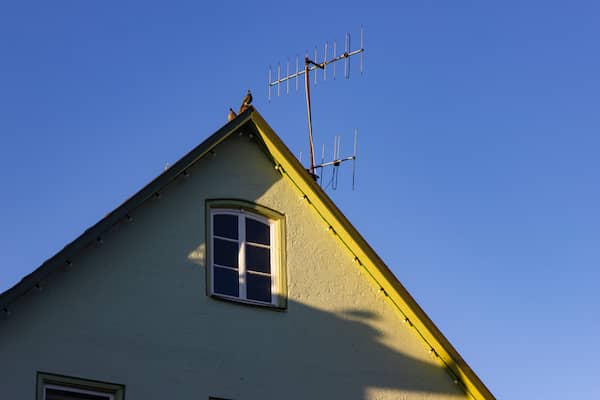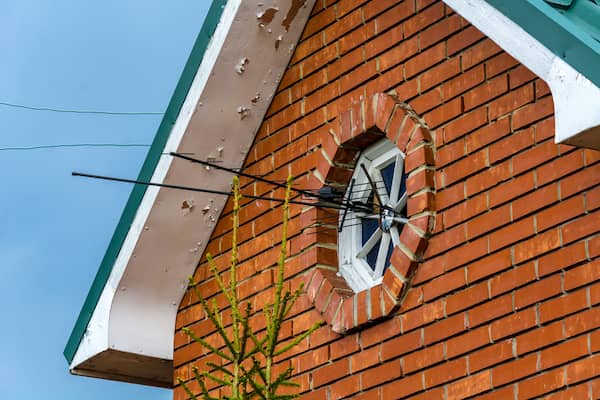
*As an Amazon Associate we may earn from qualifying purchases when you buy through links on our site.
Times are tough, which leads many of us to take a hard look at expenditures. Even cable and satellite TV can be considered luxuries. Luckily, we’re rediscovering free TV with an over-the-air (OTA) TV antenna.
For sure, TV antennas are a technical subject and we have to do our homework. But the reward is free TV for life; who can say no to that?
Trust me though, setting up a TV antenna can be a trial-by-error endeavor, which you may not get right the first time.
Maybe you’re not getting all the channels you should be getting—if it’s even obvious how to set one up.
You may be tempted to go out and buy some equipment like an amplifier from one of the big box stores near you, or order one online.
But let’s try some free techniques on how to boost TV antenna signal homemade first to get crystal-clear reception, before spending hard cash.
Locating Broadcast Towers in Your Area

By now, you should already have an idea of whether any TV station towers are located nearby.
There are dedicated websites that provide these resources, including generating reports which summarize your local TV signal strength, as well as the distances and directions of transmission towers situated around you.
This information helps determine the type of antenna you’ll need to select, and the direction you should point it towards.
Although there are several such websites, these days the site offering the most up-to-date data is without a doubt RabbitEars.info.
You should check it out: I have an article explaining the ins and outs, and how to use it to get the best TV reception.
Aim the Antenna Towards Transmission Towers
An outdoor TV antenna should be mounted on the side of your house, with the front end facing the tower and pointed towards it.
Remember, TV antennas are “line of sight” (both indoor and outdoor types) so ideally you need a clear path towards a tower, without obstacles like hills and trees between them.
Of course, it’s more obvious in which direction to aim an antenna when you’ve got a handful of towers all standing together at one location.
TV Antenna Types
If stations are indeed close together, you may want a Yagi-style unidirectional antenna (referred to as such, since these feature a single long metal axis that has high gain in a certain direction).

But often you’ll find that towers will be spread quite a distance apart from one another, so aiming in the general direction of towers (no matter if they’re spread apart by many compass degrees) will suffice in many cases.
Sometimes though you might find that stations are positioned in different directions around you, in which case a multidirectional or omnidirectional antenna may be your ticket.
Understand though that manufacturers make antennas with different reception beam widths, so it’s hard to generalize on exact thresholds of separation distances requiring a given antenna type.
Plus, different reception and interference factors in your antenna’s vicinity may work for your reception.
For instance, there are scenarios where a unidirectional antenna in a certain location that faces towers more than 50 compass degrees apart may still get all the channels.
Combining Signals
But let’s say towers are simply opposite each other at your location. You may consider mounting two or more antennas and then stacking or ganging them.
This means, once installed, you use a signal combiner or diplexer (such as the VHF/UHF Antenna Combiner by Antennas Direct—it’s actually a diplexer device) to combine TV signals into a unified feed:
Adding an extra antenna is also applicable where you want to get a channel in a different frequency band than the one supported by your current antenna.
Like when you want to receive channels in VHF, and your existing antenna is UHF only.
Always ensure that stacked antennas are separated by 2 to 4 feet to curb interference between them, and their coaxial cables are the same length to eliminate phase problems.
It’s also advisable to first connect each antenna to your TV separately to confirm they’re correctly mounted before merging their signals.
Elevate Your Antenna Higher
You know what they say: the higher the better.
As a general rule with antennas, the higher you go, the better your reception and the more channels you should get.
This is because by raising your line-of-sight antenna as far as possible above obstacles, you’ll be removing potential interference-causing obstacles.
The roof being the highest point in your home, it’s usually the ideal place for installing an outdoor TV antenna.

The antenna should be mounted on a perfectly vertical mast, enabling you to aim it directly at transmission towers; if the mast isn’t vertical, you might get poor reception.
One way that obstacles can affect reception is because radio frequency signals are subject to splitting apart when bouncing off surfaces like buildings, tree leaves, and mountains.
This may cause them to arrive out of phase with each other, distorting reception quality.
The same concept applies to indoor antennas. If you’re using your TV in the basement, you’ll get better results if the antenna is installed on a higher floor or even in the attic, rather than next to your TV.
Place the Antenna at or Near a Window
In some situations it may not be feasible to mount an antenna on the roof of your home or building, and you may need to resort to an indoor TV antenna.
Having your antenna in the house doesn’t change the fact that you’ll get the best signal in areas of your home with the least amount of interference.
Keep in mind that walls and ceilings are obstructions in themselves. Placing the antenna close, or in a window generally produces the best results as this has the clearest line of sight to TV stations.

Watch Out for Sources of Interference Close to Your Antenna
These come in many forms, and to enhance your received TV antenna signal using homemade methods we should learn about them.
Electromagnetic Appliances in Your Home
These unwelcome aspects of electrical appliances such as microwaves and hair dryers may distort your TV signal.
Such interference is usually to be found in older homes using old wiring systems whose electromagnetic shielding is considered poor by today’s standards.
So as soon as your daughter or wife activates a hair dryer—poof!—you just missed the final half minute of the game.
If you find your television picture blacking out at certain moments, you’ll need to check the entire system from your antenna to the coaxial cable running to your TV.
Ensure they don’t run closely parallel or perpendicular to any electrical cables and that they don’t intersect with these lines.
Test your appliances’ effects by activating them separately while observing the signal reaction to isolate the source.
Once you’re confident that you’ve isolated the culprit or culprits causing the interference, you can install a power conditioner like the Furman M8X2 Merit Series 8 Outlet Power Conditioner and Surge Protector.
This device will protect your TV equipment from power surge damage while filtering electromagnetic noise interference.
You can put one near your TV and plug all your devices into it.
Reflective Surfaces in the Vicinity of Your Antenna
These may weaken or distort radio frequency signals in the vicinity. The most common are metal roofs, which can interfere with TV signals or even block reception.
For instance, burglar bars and bug screens on your window may block reception by indoor antennas if these obstacles are made of metal.
Try to put a distance of at least six feet between your antenna and these metallic objects.
Cell Phone Signals
4G Long Term Evolution (LTE) signals used by cell phones may, at times, interfere with UHF channels and TV stations.
Installing an LTE filter such as this device by Channel Master may prevent such interference.
To install it, you screw it on between the end of the antenna coaxial and the device you’re connecting it to (like a TV or set-top box).
Radio Signals
If you live close to an FM radio station, there’s a chance the station will interfere with some of your weaker VHF TV stations.
Many preamplifiers have FM traps built in for blocking these signals.
However, you should first ensure that none of your TV channels are broadcasting on that channel before blocking it.
Final Thoughts
Now that you know how to boost your antenna signal in a homemade fashion, you should understand these methods may not be efficient if your equipment is faulty.
Ensure there’s nothing malfunctioning with your antenna, cords, screws, and connectors first. You’ll be well on your way to freedom from expensive cable TV.


